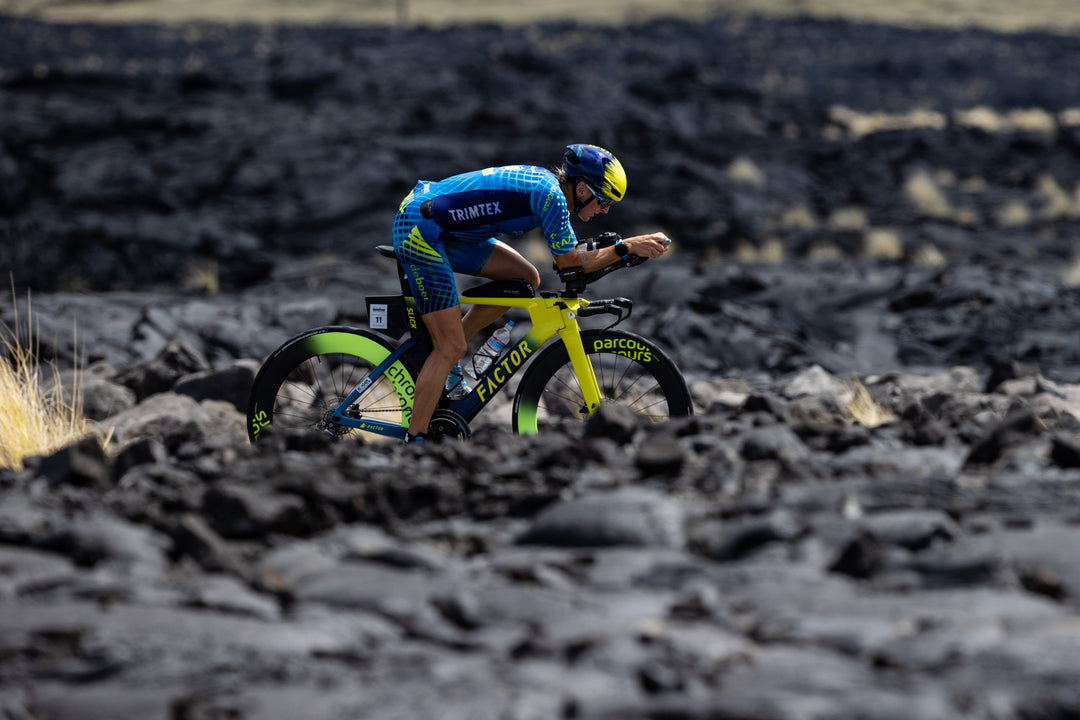How Do Athletes Best Prepare And Perform In The Heat To Still Have A Good Race?
The IRONMAN World Championships in Kona, Hawaii… Singapore T100… in fact most races in the summer months (except perhaps the UK) can have high temperatures and hot conditions, making racing even more challenging. So how do we best prepare and perform, to still have a good race?
Heat acclimatisation sessions can be added into your training, to help the body adapt to hotter conditions. There are several ways this can be done – active or passive. An active session would be cycling or run in a created hotter environment. This could be done by over dressing. For example, a carrying out a bike trainer session, whilst wearing a hoodie (hood up), leggings (leg warmers), thick socks and no fan. A passive session would be sitting in a sauna.
In fact there is research that says heat training can benefit performance, even in cooler races, and that it has similar benefits to altitude training. Sauna can also help with recovery too.
But knowing what to do and how to do it, to gain the benefits, without putting yourself in a hole can be tricky.
Parcours Athlete Kyle Smith, talks to us about heat training, active and passive heat training and finding the right balance, but also just how easy it is to over do it.

When it comes to racing in the heat, preparation isn’t just a bonus, it’s a necessity. Hot races are a different beast, and the margin for error gets razor thin. That’s why I’ve been layering in both passive and active heat strategies to make sure the body’s ready when the temperature spikes. Not really applicable for San Francisco T100 and Vancouver T100 but the rest of the season will see us racing in a lot of hot climates. The French Riviera, Valencia, Dubai and Qatar.
Passive heat work has been key. I’ll sit in a 40°C bath for 30 minutes, usually straight after training when the body’s already warm. It’s uncomfortable, but that’s the point. I also get in the sauna at 90°C: 15 minutes in, 5 minutes out, then 10 minutes back in. The goal? Teach the body to handle heat stress without breaking down.
Then there’s the active side, riding and running in hot conditions. It’s about mimicking race-day demands and gradually building tolerance. Heating up the room to race temperatures and riding on the trainer.* It teaches the brain to let the body function even under extreme heat conditions.
(*or over dressing for the workout)
So why go through it?
To trigger an earlier sweat response, increase blood plasma volume, and toughen up mentally. Early sweating helps regulate core temperature. More plasma improves cooling and endurance. And the mental edge? Being comfortable being uncomfortable, Knowing you can handle it and not panicking when things get difficult.
But here’s the line you can’t cross, overdo it, and you’ll cook yourself before you even hit the start line. Like I did in Singapore. That’s why I now rely on the most accurate tool I’ve got. My internal thermometer. Learning to listen to your body is everything.
Heat adaptation isn’t about how much you can suffer, it’s about being smart, consistent, and pulling back when needed. Like training you can get a lot done with less than you think. Start short and with less heat and slowly add volume. Get this right and exercise caution and race day will become far more enjoyable.
Here's some further reading to help with this topic:




